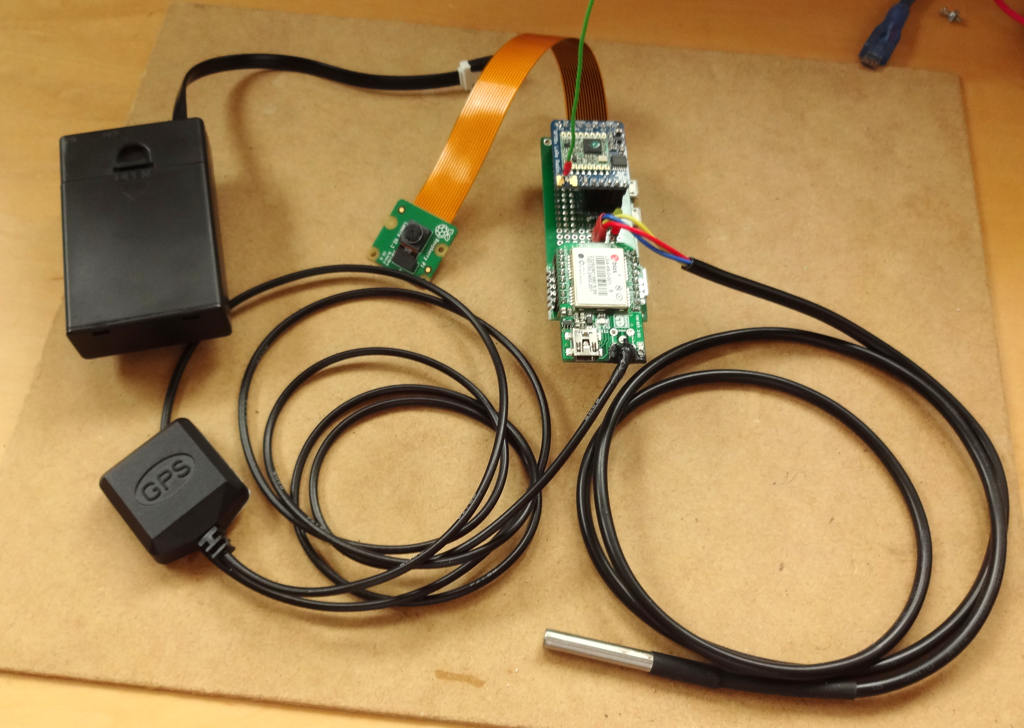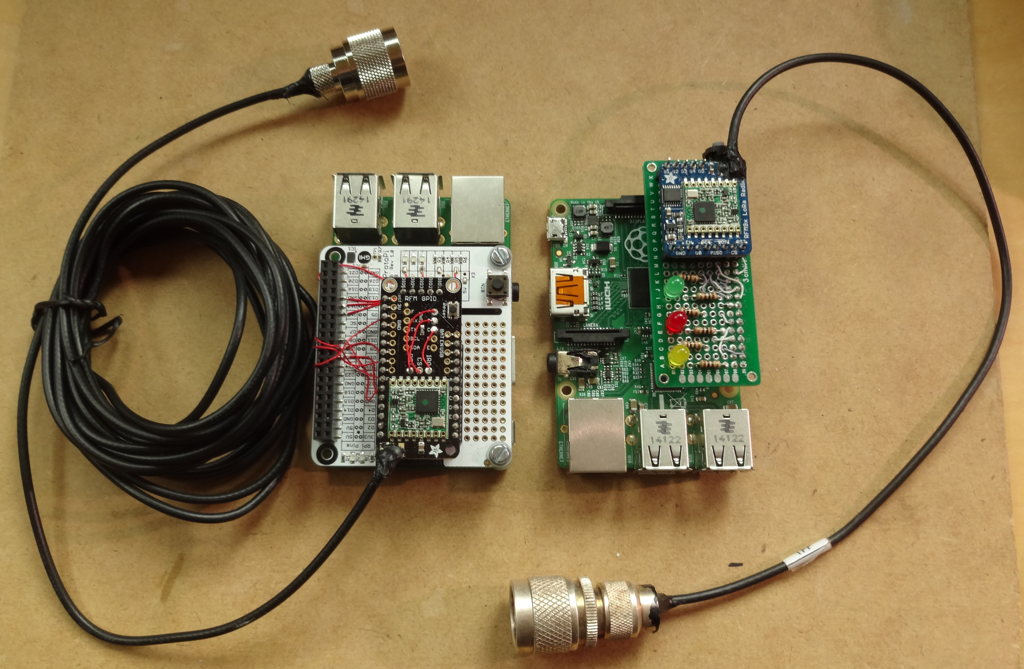The LoRa payload is based on Dave Akerman's excellent PiInTheSky system modified for USA operation. Simple changes were made to the code to support a new LoRa configuration (1200 bps using 62.5 kHz bandwidth, EC4:6 and SF8), increase the power output and enable a temperature sensor. The Semtech tools calculated, before subtracting losses or adding antenna gain, a total RF Link budget of about 146 dB (which shows the awesome capability of these radios).

The Raspberry Pi-Zero based payload was based on this blog post. It is powered off of 3 Lithium AA Primary cells and supports the Pi Camera taking high-resolution time-lapse photographs stored locally. Lower resolution copies are also transmitted after being compressed and prepared for transmission by Philip Heron's ssdv. A 640x480 image takes about 42 255-byte packets and the ssdv format allows image reconstruction with lost packets (the associated part of the image is simply missing). It also connects to a Ublox GPS capable of high-altitude operation and a DS18B20 temperature sensor for external temperature monitoring. GPS location and altitude, as well as temperature and other information is transmitted as well as stored locally.

Two Pi-based receiver-gateways were also built based on his lora-gateway project. One will be with the launch team and the other in Casper, Wyoming, where it should be able to connect to the UK site habhub.org for logging.

9 dBi Yagi antennas are connected to the Pi-based gateways and mounted on tripods.


Finally a portable LoRa receiver was made by porting Dave's code to a Teensy-LC mounted on a 6 dBi Yagi antenna. It's primary use will be during recovery but may be helpful during flight as a way to "find" the balloon after it is out of sight since the smaller Yagi has a wider field-of-view.

Some distance testing was done by hanging the payload in a tree (antenna hanging down) in the foothills above Boulder and then driving east, stopping occasionally to check reception. I got data about 37 miles out before having to turn around because it was late.
Please feel free to contact me if you'd like more information about the build or configuration of this payload.
 Dan Julio
Dan Julio
Discussions
Become a Hackaday.io Member
Create an account to leave a comment. Already have an account? Log In.